I don’t know about you, but I switch apps on my phone once a month to check out the hype and look for innovations. Unfortunately, this approach won’t work for EHR/EMR software.
You can’t switch an EHR on a whim without losing productivity. Yet, providers still have to jump the rails occasionally to try and find a perfect tool for managing health records. They might even consider building an EHR system of their own.
When creating an EHR or EMR system, healthcare providers need scalable, secure, and flexible solutions. This is why the demand for EHR application development has skyrocketed. Building such systems from scratch or adopting existing frameworks enables medical institutions to customize workflows and optimize patient care.
So how do you make an electronic health record system that’s scalable, secure, and hype-resistant?
That’s precisely what I invite you to discuss today. We’ll go through the entire process, step by step, and I’ll equip you with the best practices and actionable advice.
Top Takeaways:
- Before attempting to build an EHR system from scratch, see how you can leverage existing software by integrating EHR data with lightweight doctor- or patient-focused front end applications.
- When working on a full-fledged EHR/EMR platform, you’ll need to create multiple applications optimized for different user roles and potentially supporting various platforms across web and mobile.
- Rapid prototyping is an essential part of EHR development and helps us align an EMR system’s features with specific healthcare providers’ goals and practices.
Table of Contents:
1. What’s the Difference Between EMR and EHR
2. Why You Need an EHR or EMR System: 3 Main Reasons
3. Ready-Made vs. Custom EHR Solutions
4. EHR Software Development Process
5. Tech Stack for Building EMR/EHR Software
6. EHR/EMR System Development Cost
7. Topflight Apps’ Experience in EHR Software Development
What’s the Difference Between EMR and EHR
Some people say EMR and EHR are different. If you want my opinion, it’s the same thing. That happens to align with how leading EHR/EMR providers like Epic and Cerner define their software, too: the terms are sprinkled across their sites seemingly at random.
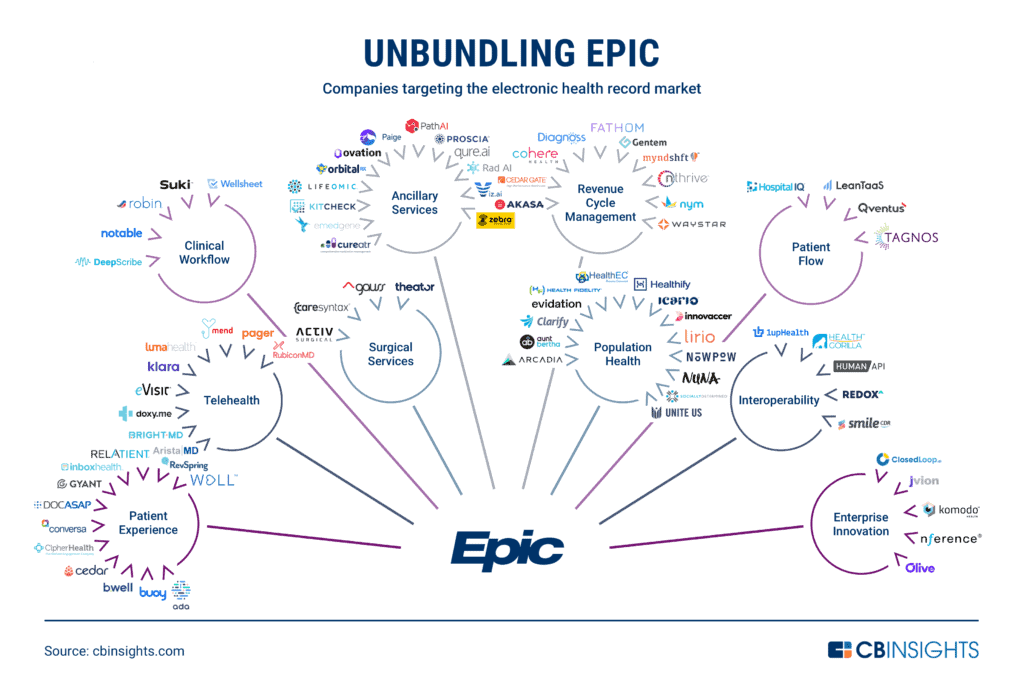 If we’re completely honest, though, we’d have to admit that EHR is a more general term, simply because it’s used more often. In practice, we have to stick with the EMR term because some people still google that instead of EHR when searching for healthcare app development support.
If we’re completely honest, though, we’d have to admit that EHR is a more general term, simply because it’s used more often. In practice, we have to stick with the EMR term because some people still google that instead of EHR when searching for healthcare app development support.
However, I am 99% positive you don’t even care about this specious difference (if you do, consider booking a call). So, please excuse me for this little filler intro. I suggest we leave this argument for the ONC masterminds (The Office of the National Coordinator for Health Information Technology) and instead jump to the more juicy and practical stuff.
Why You Need an EHR or EMR System: 3 Main Reasons
I’m sure you’ll admit there’s no going back to the good old days of handwritten patient records. As much as doctors complain about modern EHR and EMR, calling them “glorified cash registers” turning providers into data-entry clerks, we can’t deny their obvious advantages.
So why develop an EHR system? In the perfect world, we design EHR software to get the following upsides.
Increased efficiency
Automation that comes with EHR helps streamline internal workflows. When done right, an EMR system can make everyone’s life at a healthcare facility easier:
- faster decision-making
- less space to store paper medical records
- no unnecessary overtime labor
- improved employee’s morale
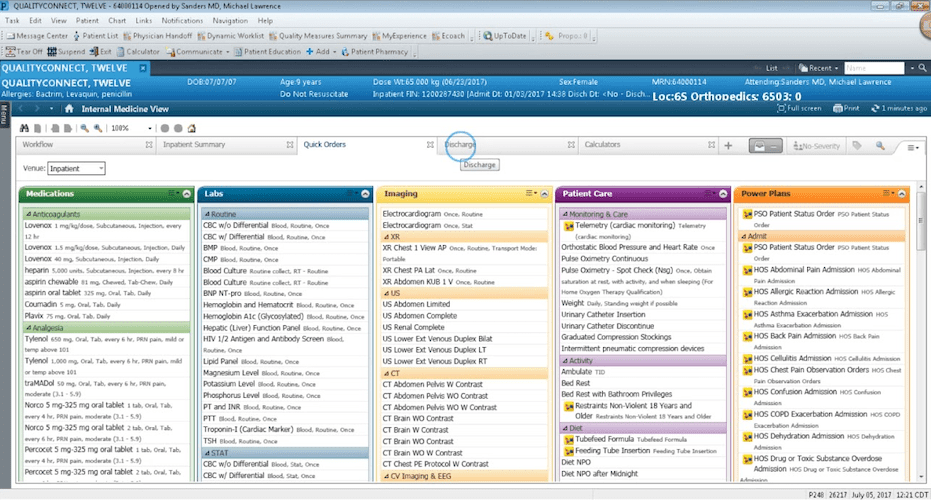 Doctors have to suffer through this (in our day and age!)
Doctors have to suffer through this (in our day and age!)
Better patient outcomes
As you’d imagine, happy healthcare providers and caregivers mean better patient outcomes. Empowered with the right tools, doctors can spend less time dealing with software and more time with patients, providing improved care as a result. That, in turn, leads to:
- strong loyalty among patients
- more personalized care
- lower readmission rates
- stronger patient-physician relationships
Optimized costs
And the major “side-effect” of setting up an EMR system is, of course, every dollar driving more value out of the healthcare system. When EHR software takes over routine tasks and helps clinicians and other medical personnel every step of their way as a decision support tool, you no longer need to throw billions of dollars at the thing to make it run efficiently 24/7.
Ready-made vs. Custom EHR Solutions
When we talk about software, there are really only two options of handling it — either you adopt software or the software adopts you.
The seemingly easier route is to go and implement one of the well-known EHR systems, such as Epic, Cerner, Allscripts, you name it – instead of custom EMR/EHR software development. Such an approach has its advantages and drawbacks:
Implementing an out-of-the-box EHR system
| Pros | Cons |
|
|
As you can see, this is the scenario where software adopts you. You need to learn how to use it, find a way around its quirkiness and integrate it with everything else you’re using, train personnel, etc.
Alternatively, you can build your own EHR platform, and it doesn’t have to be that scary hairy thing from the 90s. If we like working with Gmail or Facebook, why can’t we create EHR software that works and feels as intuitive?
Related: How to integrate your health app with EPIC EHR/EMR and Allscripts EHR integration.
The flashforward is we can, but we’ll talk about that later. For now, let’s see what the implications are with custom EHR software development:
Developing a custom EHR system
| Pros | Cons |
|
|
Opting for EHR custom software development allows healthcare providers to tailor their system to meet specific needs, from patient record management to clinical decision support. This customized approach is a major advantage over out-of-the-box solutions, which often lack the flexibility required by different medical practices.
For a more detailed breakdown of the EHR cost, you can visit our comprehensive guide on EHR implementation.
EHR Software Development Process: Step by Step
As you can see, it’s not exactly rocket science — EMR software development pays off in huge dividends in the long run. I suggest we jump right into action and start discussing how to build an EHR system. After all, isn’t this why you’re here?
Once you’ve skimmed through the steps below, the question “How to create an electronic medical record system?” will no longer sound daunting at all.
To guide you through the process step by step, here’s an overview table of the key phases involved in how to build an EHR system, breaking down each stage for clarity and focus.
| Step | Description |
|---|---|
| Step 1: Strategize | Define goals, target users, and project scope. Create a lean canvas, high-level feature list, and initial architecture diagram. Align workflows. |
| Step 2: Prototype and Design | Build low- and high-fidelity prototypes to test user journeys. Validate designs with test users and technical teams to ensure usability. |
| Step 3: Code Development | Assemble an experienced team. Develop front-end, back-end, and APIs. Integrate advanced features and ensure HIPAA compliance. |
| Step 4: Maintenance | Launch the EHR system, monitor its performance, address bugs, and roll out new features based on user feedback. |
Step 1: Strategize
No surprise here. Any project, be it EHR system development or clinic construction, requires thorough research and planning. You’ll have to answer questions like:
- Who will be the primary users of this new EMR system?
- What is the end goal for implementing an EHR?
- Do I have some target dates for delivering the system?
- How will I measure the success of the project?
These and myriad other questions will need answers to shape the project scope accordingly. Ultimately, the deliverables of the strategy session will come down to:
- lean canvas (just a clever word for business plan/model)
- high-level, prioritized feature list
- approximate diagram of the EHR’s architecture
When planning EHR system design, it’s crucial to align the system with the workflows of your healthcare organization. Consider the various roles that will interact with the system—whether you’re looking to create an EMR system or build a comprehensive EHR platform. Each role, from administrative staff to doctors, will require different functionalities.
Most development agencies love when a customer comes with a ready plan and a clear vision, so they can start executing without delay. Others, like Topflight Apps, prefer to help you form your strategy, sometimes starting with nothing but a napkin sketch.
For example, we’d take you through a well-defined discovery process that we call Pre-flight Workshop and help you align your EHR vision with your end goals tied to specific ROI metrics.
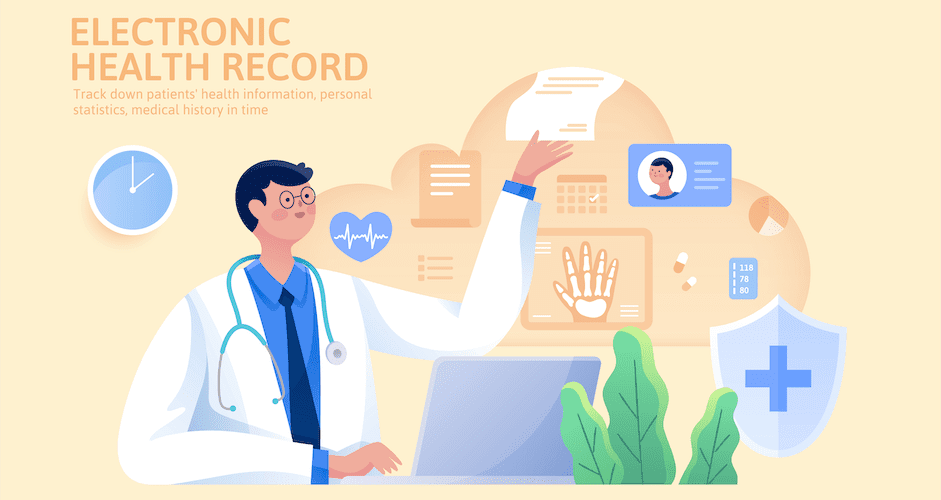 At the end of this step, you will have a solid understanding of why you are building the EHR system and a rough vision of its components. Here we come close to one thing that’s often overlooked by people sharing their thoughts on EMR software development.
At the end of this step, you will have a solid understanding of why you are building the EHR system and a rough vision of its components. Here we come close to one thing that’s often overlooked by people sharing their thoughts on EMR software development.
Related: How to Build a Medical Startup
Realize you’ll be building more than a single app
If you think of it, that’s really hard to miss. Yet, most companies talking about EHR development skip the part where they tell you you’ll be building multiple apps.
That’s something you can’t escape realizing during the strategy workshop. Because going through your target audience’s needs, you can’t help but notice that a lot of people will be using your EHR system in a lot of different ways.
You can think of nurses and doctors filling in patient details or looking up their vitals and other info on the platform. Then there will be front-office workers, administrators, and management using the system, right? They will use it on different devices.
Therefore, the question becomes, “How do we fit all of that into a single EHR platform?” How do we create EMR software that works equally well for all users on smartphones, desktop machines, tablets, etc.?
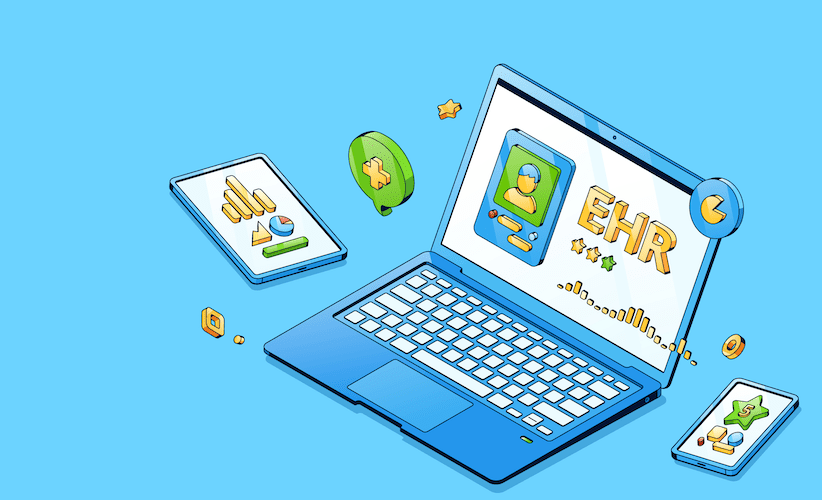 The simple answer is we build multiple applications for different use cases. In reality, your EHR system is going to be like a layer cake. If you zoom out a little, you’ll see:
The simple answer is we build multiple applications for different use cases. In reality, your EHR system is going to be like a layer cake. If you zoom out a little, you’ll see:
- multiple front-ends (that’s how developers call apps we, users, interact with)
- APIs layer
- security mechanisms
- back end with databases
Related: Complete Guide to Building a Healthcare App
That’s a very simplistic illustration of what a typical EHR platform would look like. However, the bottom line is that you and your team will be working on several separate applications. Let’s say:
- a tablet-optimized application for doctors
- a smartphone and a web-based (works best in desktop browsers) apps for doctors
- a web application for administration and management
As you already know, when you build your own EHR software, nothing stops you from building independent applications (that still work in tandem, syncing all clinical data) for different user roles based on their unique needs.
Minimal viable product is your everything
Even though a clinic, private practice, or hospital may benefit from implementing all possible applications that make up an EHR system, you need to focus on your ROI goals.
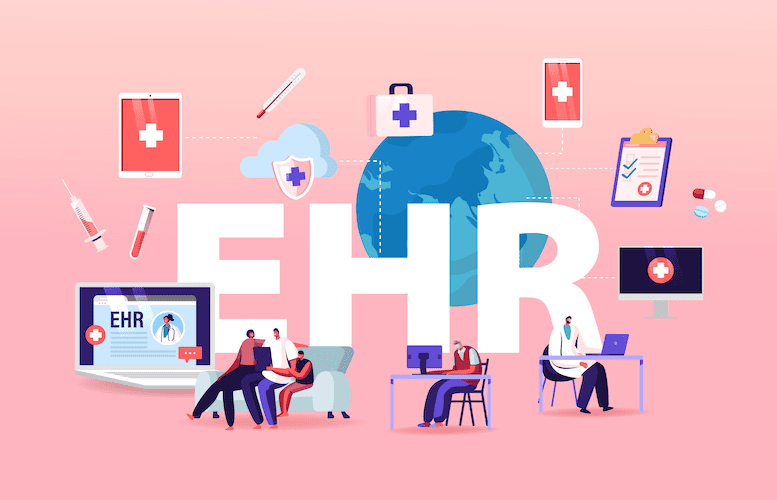
What parts of the system are likely to produce an immediate payback? Which parts of your healthcare system will benefit most from EHR automation? Start with them. There’s no need to start EHR/EMR software in its entirety, with all possible bells and whistles.
Related: MVP App Development: Everything You Need to Know
In my opinion, the ideal scenario would be, to begin with a single app for doctors and nurses (which will adapt its interface based on a user role) and another one for admins. Even then, you should trim features to the bare minimum that will drive measurable value, for example:
- faster test results from labs
- built-in e-prescribing
- on-the-go patient’s health medical history
Once the metrics are confirmed, you will continue improving on your minimal viable product (MVP), drawing funds from lowered expenses or new revenue streams.
This MVP thing and your decision about which parts of the EHR system to start with naturally belong to the strategy step. You are now ready for the second step.
Step 2: Prototyping and design
If you’ve read our other blog posts, you’re already familiar with this stage, and it’s not much different for the EHR development process. However, I want your full attention at this point because this step can make or break the entire project.
Why do doctors and nurses constantly complain about EHR systems? Why do they call them 800-pound gorillas in the healthcare industry and scold them for their click-to-death nature? Because some of them serve the healthcare system as a whole (read billing) and don’t care that much about med personnel’s needs.
Related: The Ultimate Guide to UI/UX Design and Healthcare App Design
Custom EMR development, in that sense, sets you completely free. You may design unique front ends for different users so that ERM software doesn’t get in their way.
How does this UX/UI thing work precisely?
Designers review the needs of your target audience and define user journeys on flowcharts to understand the most optimal way for customers to navigate around the software.
Low-fidelity designs
They then come up with rough mockups, also known as low-fidelity wireframes. It’s like sketching application screens on a napkin. Only they do that in special programs like InVision.
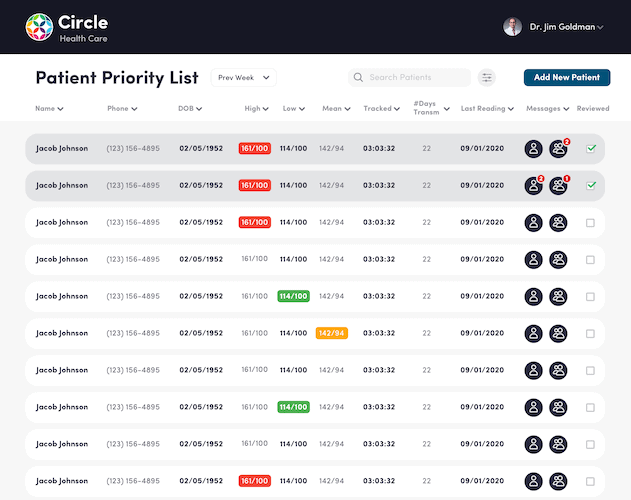
InVision, which we also prefer, is so popular because it allows UX/UI engineers to interconnect all designed screens. As a result, the screens come to life and react to different gestures and clicks. This effectively turns otherwise static screens into an interactive prototype.
High-fidelity designs
The next thing on the list is to turn the primitive prototype into a high-fidelity one. That simply means updating the graphics to what users will actually see in the app. Why not start with the refined version of UX/UI in the first place? Because it’s easier and cheaper to iterate on rough wireframes.
Design validation with test users
The sole purpose of the interactive prototype is to test it with users before starting development. We need to make sure that the EHR software we’re building is intuitive and fulfills customer needs appropriately. You see, programming these interfaces would take way more time than several iterations of design and user testing.
We use such tools as usertesting.com to gather feedback and improve the prototype before building EHR software.
Technical UX validation
When designing an EHR system, one thing you might miss is to check with programmers whether the design is not too complex to develop.
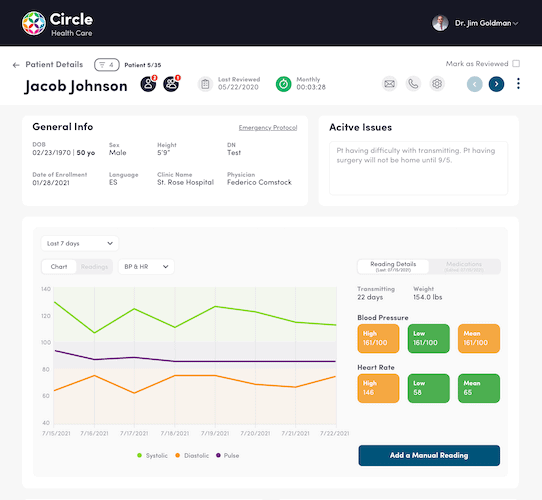
Developers can offer legit shortcuts when they know a more optimal way for realizing certain features.
Of course, virtually any design can be coded into the app. However, we’re looking for an adequate blend of functionality, UI, and required effort.
The major takeaway from the design step
Note how many EHRs have too much on-screen stuff: checkboxes, fields, tabs, menus, etc. Get more than seven major interactive elements on a single screen, and your customer is lost. This happens when software developers and designers don’t really put themselves in their client’s shoes for every specific user role.
The virtuous cycle of Agile
Before we move on to the next step, I want to briefly mention that the design stage really kicks in the agile development cycle. Without boring you to death, agile is the golden standard in the software development industry.
Related: Agile App Development: Building Winning Products
Agile means there will be several iterations for the design and all consecutive steps of the EHR development process. Even after the release, because great products tend to grow, reflecting the market dynamics and changing user needs.
Therefore, the agile approach helps establish the necessary processes, team composition, tools, and everything required to sustain an EHR long term.
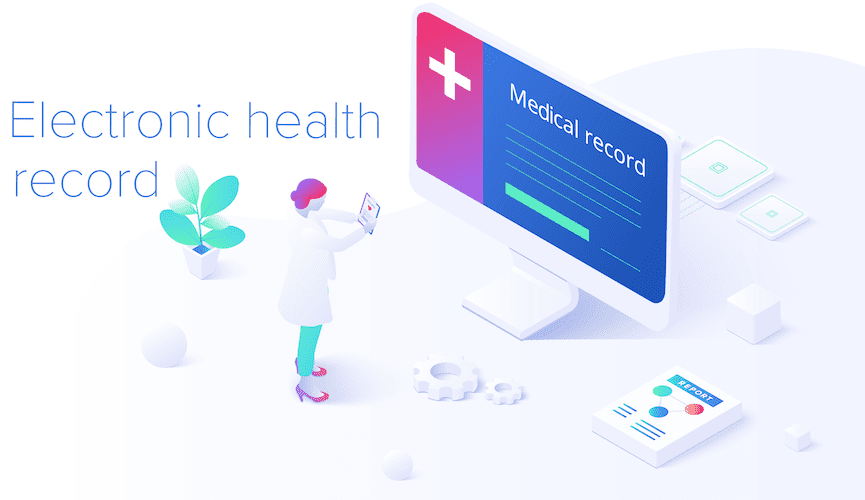
During the design phase, it’s vital to focus on EMR software design principles that cater to both front-end users like doctors and back-end functionalities such as scheduling, reporting, and privacy management. By ensuring that your EHR and EMR software development processes incorporate user-friendly interfaces, you’ll reduce the learning curve for medical staff.
Step #3: Coding
Even though coding is one of the most crucial parts of the entire EMR development process, it’s often little understood by business owners. And rightly so, developers might have an even harder time parsing through the daily healthcare routine of medical workers and management.
I suggest we touch on the main areas of building an EHR system you need to be aware of.
EHR development team
Needless to say, you need to work with a team having plenty of experience building EHR solutions. If you are building an EHR from scratch, the following team composition should suffice:
- front-end devs (iOS/Android/React, etc. — based on the apps you’re building)
- full-stack back-end developer for working on the core logic, database, security, etc.
- dedicated API developer
- QA engineers
- UX/UI designer
- Product manager
- Project manager
You may be surprised to see two seemingly similar roles like product and project manager on the list. However, those are pretty different. While the product manager ensures your vision is carefully carried over to healthcare app developers, the project manager is busy with handling development, design, and testing tasks day-to-day.
Features development
If you have a medical background, you know pretty well what features you need in an EMR, such as patient records, charting, reports, etc. More so, you already have a prioritized list of features from the first step.
My bet is if you’re looking to build an EHR, you don’t just need electronic health records with a super user-friendly interface. You’re likely looking for more advanced features backed by the latest technologies, for example:
- AI and machine learning, helping with parsing medical data, diagnosing, and focusing doctors’ attention on patients in a risk group
- Internet of Things and wearables to feed EHR with patients’ vitals in real-time
- Telemedicine integrations
- Blockchain-based EHR for trustless operations among a consortium of companies
Related: IoT App Development Guide and Blockchain in the Healthcare
Also Read: How to Build a Wearable App for iOS and Android
Developers must also consider key integrations, such as e-prescriptions and lab tests, to streamline workflows. Additionally, building features like chat functionality for inter-staff communication or adding mental health tracking can further enhance the system’s utility for diverse healthcare settings.
When you create an EHR platform, integrating certification standards such as ONC-ATCB or CE Marking ensures that your system meets the necessary regulations for safety and performance. These certifications not only instill confidence in healthcare providers but also help streamline the approval process when rolling out new features like e-prescriptions, lab integrations, or clinical decision support tools.
It’s high time for improving providers’ EHR experience with tools like automatic handwriting recognition and AI-based imagery analysis.
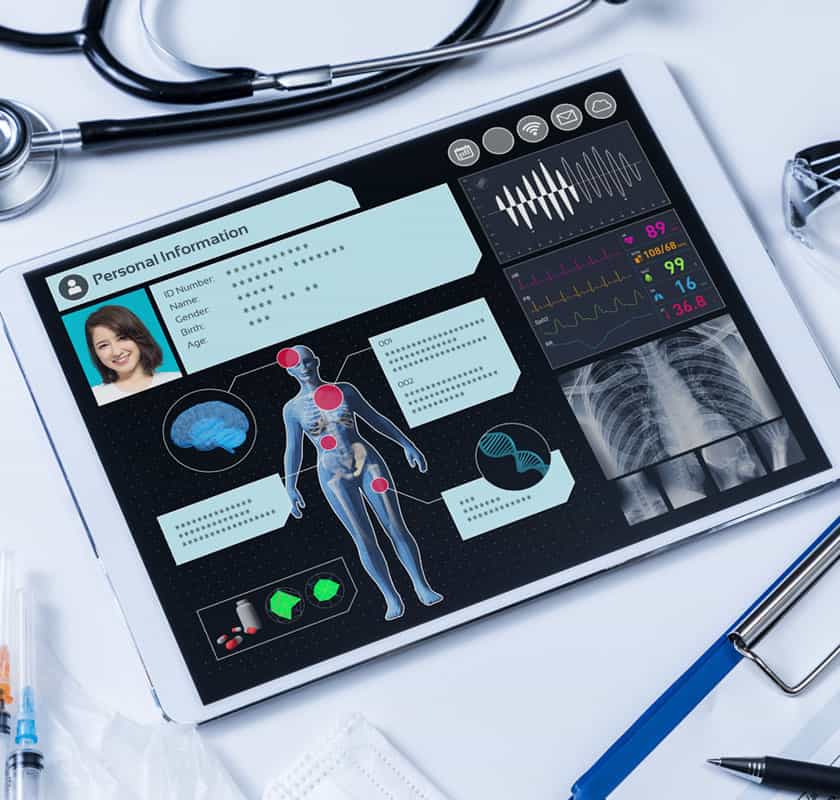
APIs
As we already discussed, one of the layers in the platform will be APIs. Think about it as a set of instructions for your EHR to work with other third-party services and existing solutions.
APIs ensure EMR interoperability: being able to send and receive data (e.g., lab results) in prerequisite formats, process it, and then output for customers on the respective platform. That’s where FHIR by HL7 and other data standards and coding (e.g., CPT, DICOM, CCD) come into play.
With Specode’s AI-powered capabilities, custom healthcare software development for EHR/EMR systems becomes incredibly fast and flexible, allowing for seamless integration and unmatched performance.
APIs play a critical role in enabling EHR custom software development by allowing systems to pull patient visit data, manage medication lists, and synchronize treatment plans across multiple platforms seamlessly.
Data migration
You probably already keep patient data in a system of sorts. Therefore, migrating that data into the EHR without losing any information is vital for ERM software development. Other data practices include caching.
For example, it’s recommended to cache data on mobile to not lose data and sync it correctly. Imagine a doctor entering patient information while being offline; then, when the device comes online again, the software needs not only to upload the missing data but also sync back from the EHR anything other team members might have entered in the interim – all of that without overwriting or losing any info.
Security and HIPAA compliance
Of course, as any healthcare solution dealing with protected health information (PHI), EHR software must comply with HIPAA regulations.

We covered the topic ad nauseam in separate blogs, e.g., here: Comprehensive Guide HIPAA-Compliant Application Development.
Among other things, to make EHR software HIPAA compliant, we need to restrict access control to patient data based on user roles, and also keep automated logs running to record every action on the system for audit purposes.
Ensuring patient privacy is a cornerstone of EHR system design, particularly when handling sensitive information like allergies, disease history, and ongoing treatment records.
Quality Assurance during EHR development
Ok, so testing goes hand in hand with development. Every new version of the healthcare software needs to be tested before shipping it into production. Developers include automatic tests right into code. Then, there’s always a QA engineer going through all possible scenarios, trying to “break” the system from all imaginable angles.
Related: QA Guide: Steps, Tools, Best Practices and More
Step #4: Maintenance and support
If you remember, steps 1-3 follow each other in mini-cycles, as per the agile methodology. At some point, when the product is doing what it’s supposed to do, you will launch it publicly.
That’s not the end of the development cycle, though, as you will continue to work on new features, improvements, fixing some lingering minor issues, and keeping the EHR software up-to-date.
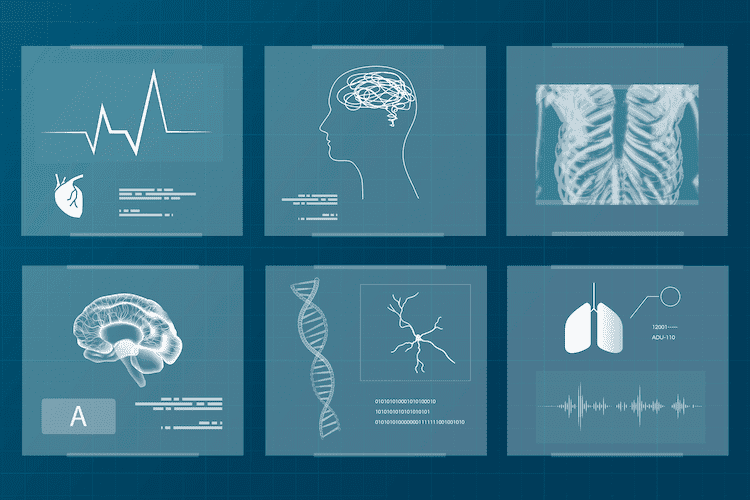
Of course, that process is way less intensive compared to the initial efforts for EHR implementation. Still, it’s something you need to consider and foresee a retainer team for handling all these tasks.
Tech Stack for Building EMR/EHR Software
I believe businesses choose companies or, rather, people when deciding on a development partner, not technologies. I mean, if you run into a Microsoft.net development shop, you’ll be stuck with their tech stack, regardless of your preferences. And it will be tough to convince them to switch to this new shiny thing you’ve read about at a random blog. But that should not be your concern, really. All technologies work just fine, in the right hands.
Related: How to choose the right tech stack for your application
A word of advice here would be to check whether the team can work with your existing solutions and other third-party services you want to integrate with. One more thing worth double-checking is to ask for a microservices-based approach to the EHR’s architecture, which should be an obvious no-brainer to any capable team.
EHR/EMR System Development Cost
$400,000+ for a mid-level EHR system. Up to $1,000,000 for a full-blown platform. Sounds scary? Well, depending on your needs, you may just need integrations, which often fall well within the $100K range. I’d say a decent prototype for the web (without mobile clients) should be doable in a $150K-$200Kish range.
Related: App Development Costs: The Complete Breakdown
Topflight Apps’ Experience in EHR Software Development
I get it; most healthcare companies are interested in integration services, either looking to integrate existing EHR systems with new solutions or connecting EHRs by established vendors to some other software they use.
Check out our EHR integration services
After all, developing electronic health records from scratch almost sounds like a heroic endeavor, requiring a substantial budget and a considerable amount of time. However, EHRs don’t always have to be these humongous systems.
For instance, look at an RPM platform with a built-in EHR we made for Dedica. The solution is lightweight and, at the same time, very effective. Eventually, the client went on to provide the platform to other practices via a subscription model, successfully securing his first $300,000-worth ARR deal.
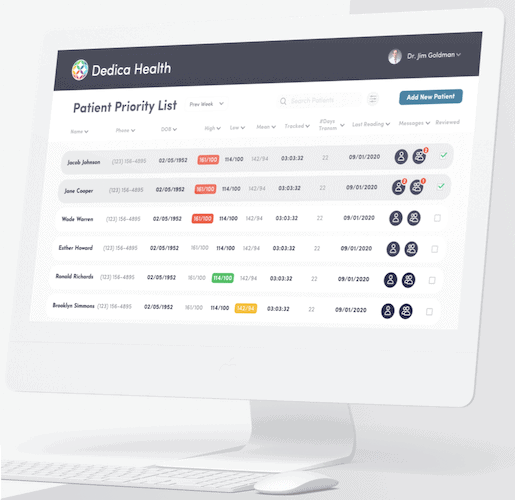
We also often find ourselves working on EHR/EMR integration projects. Here’s a brief description of two recent projects in the space:
#1. NDA-protected EHR integration project
ADT, Imaging Orders(ORM), Imaging Results(ORU)
Worked with a facility IT team and teleradiology group to integrate multiple PACS, billing, partner facilities to create a streamlined workflow for radiologists to read studies remotely.
- Epic EHR integration
- ADT messaging
- Orders (ORM) messaging
- Solicited results (ORU)
#2. NDA-protected EMR integration project
ADT demographics, discharge orders (ORM)
Worked with a vendor to construct a customized care team and executive web dashboard for patient census and appropriate level of care management.
- Epic ADT integration
- Diagnosis Resource Group (DRG) coding
- Epic discharge order (ORM) integration
I don’t say that often, but Topflight is the right place to bring your EHR automation ideas to life. The company has intricate knowledge of what medical workers have to deal with and what can be done to help them achieve better results without burnout.
Whether you decide to make EMR or build EHR software from scratch, the result should empower your healthcare facility to offer better patient care and streamline operational efficiencies. Custom solutions allow you to integrate features like reporting, scheduling, and real-time clinical decision support, ensuring that your system evolves with your practice.
Even if you don’t have millions of dollars to invest in a brand-new EHR solution for your clinic but have secured a $100,000-$200,000 budget for IT automation, we can help you build something beautiful and engaging. Something that your staff and patients will love to use.
Related Articles:
- HIPAA Compliant App Development
- Patient Portal App Development Guide
- SMART on FHIR Appp Development
- How to build a doctor’s appointment application
- How to develop a hospital management system
- Guide to collecting healthcare data
- How to create a telehealth application
- E-Prescription App Development Guide
- EHR for Medical Billing
- Surescripts Integration: Main Steps
[This blog was originally published in January 2022, and has been updated in light of more recent information]
FAQ
What's the difference between EHR and EMR?
One uses the term “health” and the other “medical” — perfect synonyms. Some say that EMRs usually work within a single practice while EHRs work across multiple healthcare organizations. In practice, though, both EHR and EMR are used interchangeably.
Can you help us integrate third party software with our EPIC/Cerner/AllScripts EHR?
Absolutely
How long with it take to create EHR software from scratch?
12-18 months; 6-9 months for an MVP.
If there's one biggest mistake we can make with EHR development, what would that be?
Demand agile development from your development partner. You will need incremental roll-out and validation of software, which is only possible with the agile pattern.
What technology stack do you recommend for building an EHR system?
Absolutely any tech stack will work as long as you pick the right team. You shouldn’t limit yourself to specific information technology; it’s all about niche expertise and the right mix of design and development talent on a team. Probably one exception is cloud hosting: you need it, but again, that can be anything.



